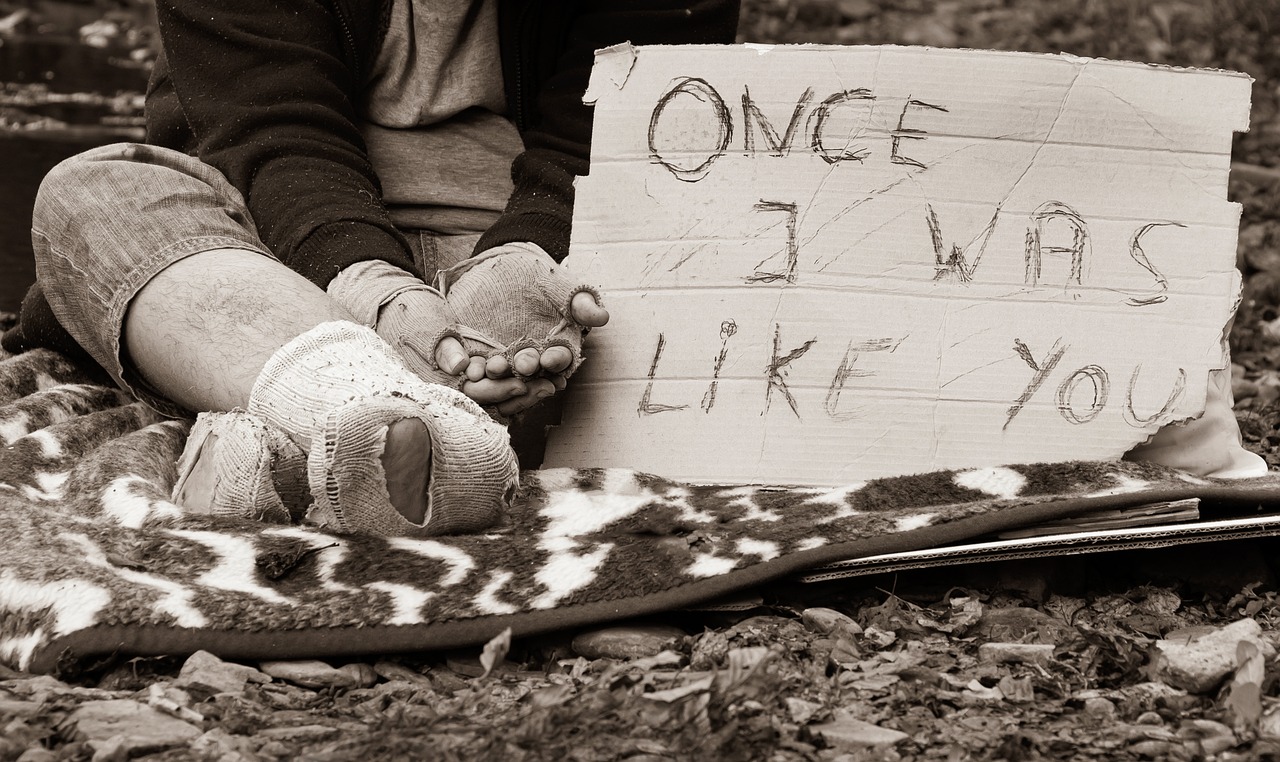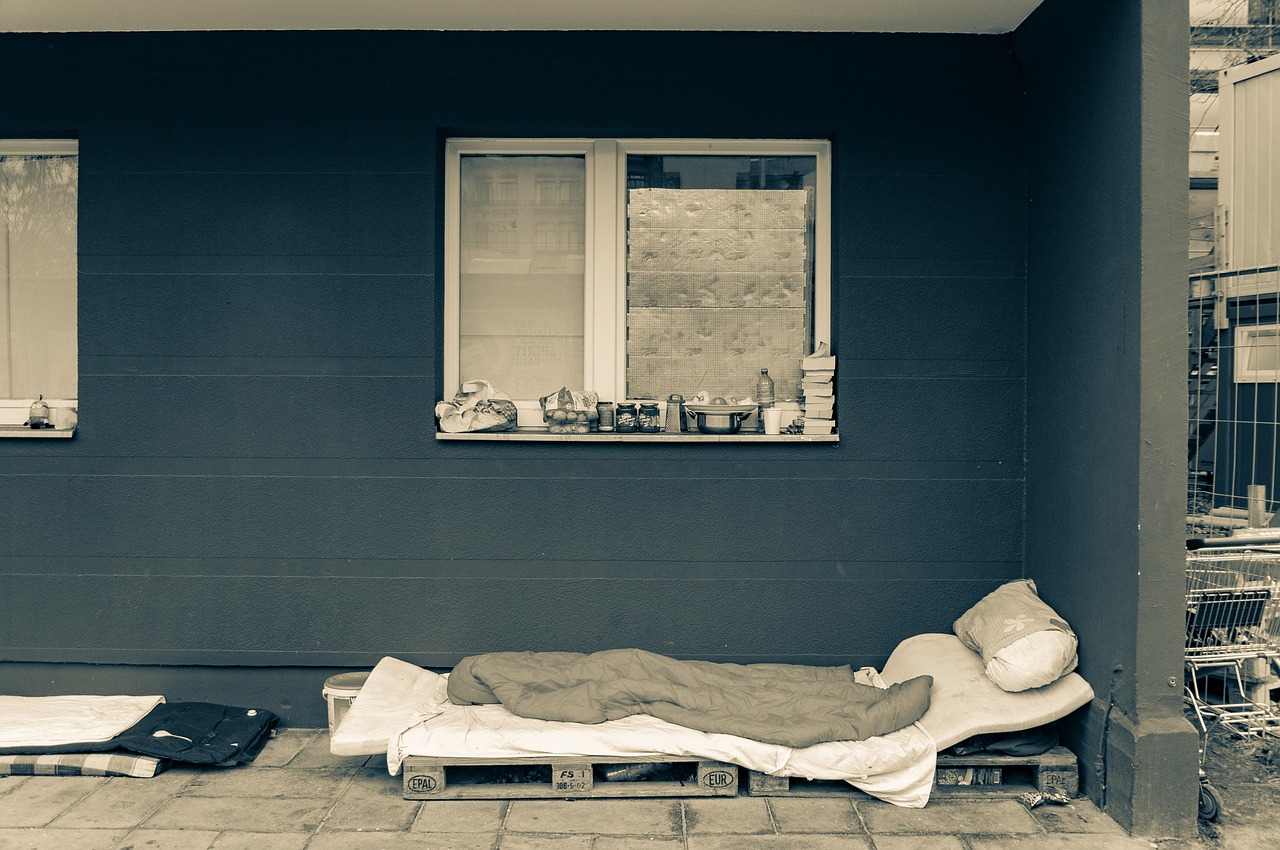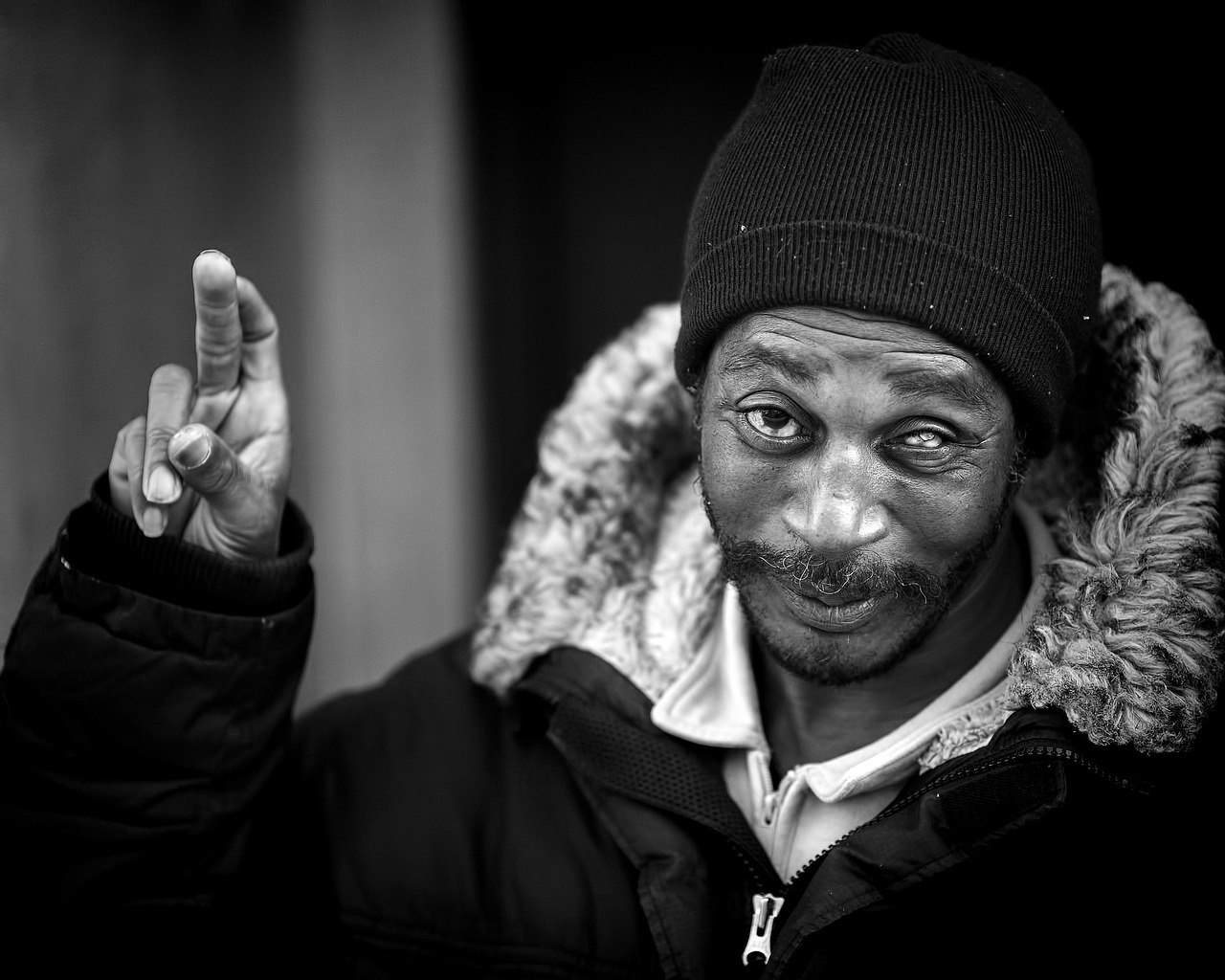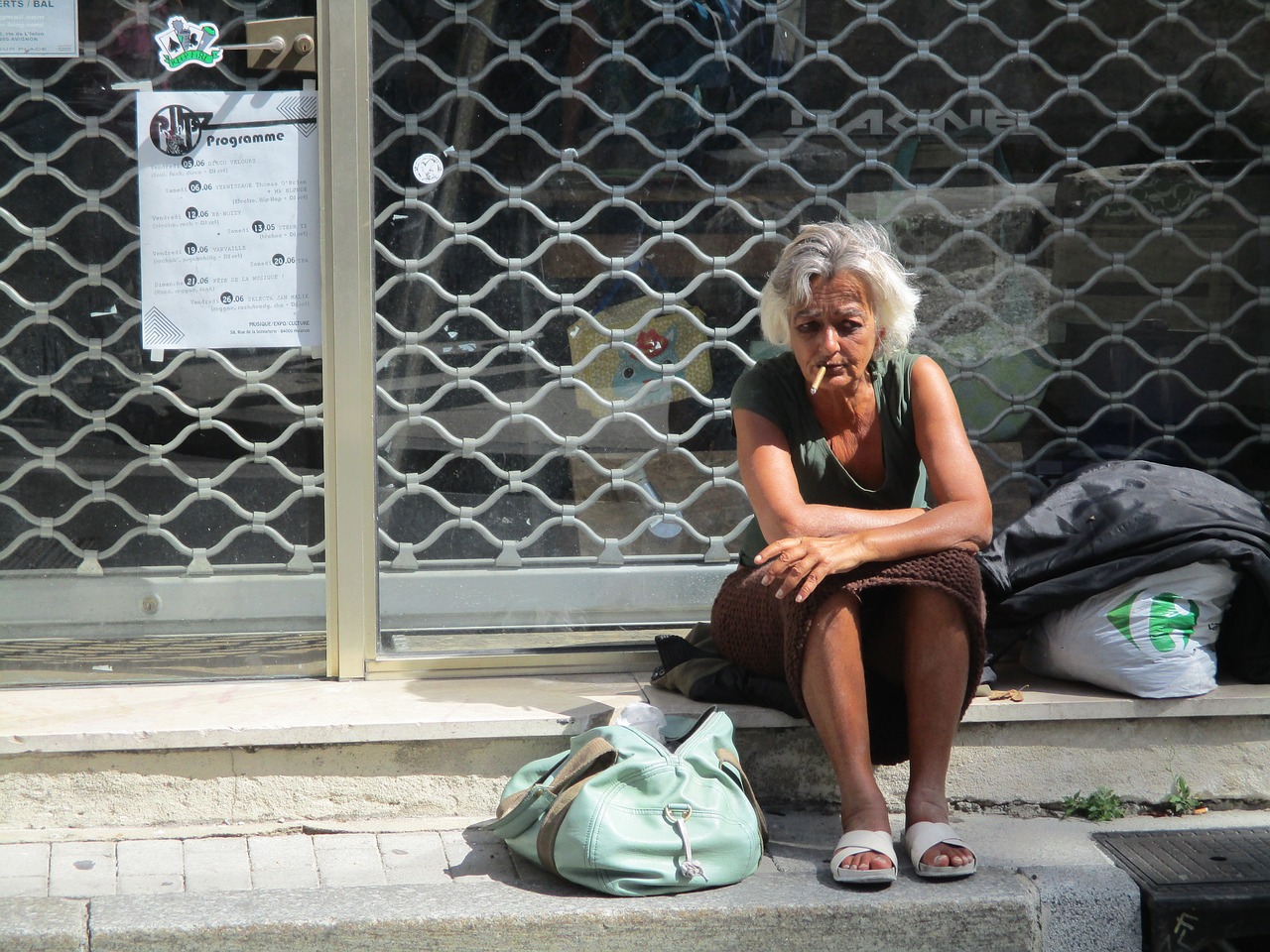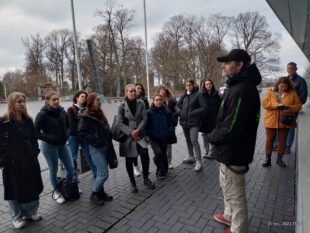Dakloosheid is een diepgaand misbegrepen en complex probleem. Wanneer mensen de term horen, neigen ze ernaar het te associëren met geestesziekte of problematisch middelengebruik. Mensen die dakloos zijn, worden zwaar gestigmatiseerd, ontmenselijkt en worden gezien als minder bekwaam en betrouwbaar. Maar de realiteit is veel complexer dan deze percepties.
Category: Homeless news world
Dit nieuwsblok belicht de wereldwijde problematiek van dakloosheid, waarbij het zich richt op verschillende regio’s en landen over de hele wereld. Van het verkennen van de dieperliggende oorzaken en gevolgen tot het bespreken van innovatieve benaderingen en beleidsmaatregelen, dit blok biedt een holistische kijk op de uitdagingen en inspanningen om dakloosheid op mondiaal niveau aan te pakken. We presenteren verhalen van veerkracht en hoop, naast de obstakels die moeten worden overwonnen op weg naar een meer inclusieve en rechtvaardige samenleving.
“6 Verhalen van Succesvolle Mensen Die Ooit Dakloos Waren
Dakloosheid is een nationale crisis. Deze zes mensen hebben het meegemaakt en achter zich gelaten. Een humanitaire crisis ontvouwt zich in de Verenigde Staten. Volgens een rapport van Housing and Urban Development uit 2022 hebben op één enkele nacht 582.000 mensen dakloosheid ervaren in Amerika.
9 vragen aan
Noah (21)
Hoe ben je dakloos geworden?
Toen ik ongeveer 18 was, begon mijn vader’s vriendin te dreigen dat ze de politie zou bellen. Ik zei: “Ik wil niets met de politie te maken hebben. Ik kan hier niet blijven.” Ik vertrok die winter. Ik had een slaapzak. Ik sliep op de achterporch tegenover het huis van mijn vriendin. Af en toe bracht ze me wat eten.
Hoe lang bleef je op de porch?
Ongeveer twee weken. Een counselor van mijn school vertelde me over Star House, een inloopcentrum dat 24/7 open is voor jongeren. Alles wat ik nodig had was daar: eten, kleren. Het enige wat jammer was, was dat ze geen schoenen hadden die mij pasten. Ik had een klein bijbaantje en had gespaard. Met wat van dat geld kocht ik schoenen.
Hoe combineerde je school en dakloosheid?
Bijna lukte het me niet om af te studeren. Ik miste een paar schooldagen. Ik ben ook een diepe slaper en miste een paar keer mijn bus. Het personeel van Star House zei: “Je moet jezelf bij elkaar rapen.” Ze zetten wekkers op hun telefoons, maakten me wakker en brachten me naar mijn bushalte. Mijn cijfers begonnen te verbeteren. Het leidde gewoon tot mijn afstuderen.
Hoe voelde dat?
Ik kon afstuderen en was trots op mezelf omdat ik mezelf tot mijn grens had gedreven, meer dan ik me ooit had kunnen voorstellen.
Hoe bracht je je dagen door?
Star House is 24 uur per dag open. Je kunt er op elk moment binnenkomen. Ik kon er relaxen, mijn telefoon opladen, wat dan ook, gedurende de dag.
Sliep je bij Star House?
Ik heb maar een paar dagen in Star House geslapen, totdat ze tenten begonnen uit te delen. Ik zette mijn tent op een plekje dat ik leuk vond. Slapen in een tent werkte voor mij, want het hield me weg van het gedoe. En ik houd ervan om in de regen te slapen omdat ik het geluid mooi vind als het op de bovenkant van de tent tikt.
Waar slaap je nu?
Op een dag dacht ik bij mezelf: Wat als ik mijn eigen appartement krijg? Waarom niet proberen via Star House? Ik vulde het aanvraagformulier in. Toen, ergens in september, was ik in Star House aan het relaxen. Ik keek naar “Teen Titans.” Twee medewerkers kwamen naar me toe. Ik dacht dat ik problemen had. Ze keken naar me en zeiden: “Hey, wil je vandaag verhuizen?” Ik zei: “Breng me alsjeblieft!” Ik ging van slapen in een tent naar slapen in een bed.
source New York Times
9 Vragen aan..
Yvonne (66)
Hoe ben je dakloos geworden? Ik raakte door mijn geld heen. Ik had geen baan, maar ik kon een motor verkopen. Ik had een overeenkomst met mijn voormalige huisbaas dat ik zou verhuizen en haar de verschuldigde huur zou betalen. Dus ik heb geen uitzetting op mijn dossier. Wat heb je gedaan nadat je je appartement had verloren? Ik had mijn auto. Ik had twee katten. Ik wist niet wat ik moest doen, dus ik bleef gewoon in de stad waar ik acht jaar had gewoond. Ik zou de auto rijden en ergens parkeren om te overnachten.
Hoe was het om in je auto te slapen? Ik sliep op de bestuurdersstoel en klapte de stoel naar achteren. Het grootste probleem was dat ik mijn voeten niet kon verhogen. Dus na een tijdje begonnen mijn enkels op te zwellen. En ik denk dat dit een probleem is voor de meeste dakloze mensen in voertuigen zonder bedden: ze eindigen met opgezwollen enkels.
Kon je werken? Ik probeerde werk te vinden als juridisch secretaresse of administratief medewerker. Dat was moeilijk omdat je voor 9 uur op het werk moest zijn en het opvangcentrum pas om 8.30 uur met douches begon. Dus begon ik met het verzamelen van recyclebaar materiaal.
Hoe was dat? Het is niet erg winstgevend, maar het is genoeg om dingen te kunnen betalen. Ik deed het omdat ik kattenbakvulling en kattenvoer moest kopen. Ik deed het ‘s nachts omdat ik niet wilde dat mensen me zouden herkennen, en ook omdat het makkelijker was om de auto met mijn katten te parkeren en ze voor een tijdje achter te laten.
Hoe kwam je aan voedsel? Het duurde ongeveer zeven maanden voordat ik erachter kwam dat ik voedselbonnen kon krijgen. Het is niet alsof je jezelf kunt voeden met $6,50 per dag, want zelfs een broodje bij de supermarkt kost meer dan dat. Vaak haalde ik gewoon peperoni en brood, Honey Nut Cheerios zonder melk. Chobani-aardbeiyoghurt in de grote bak – die at ik in één keer op. Ik haalde ook van die instant soepbekers en ging naar Starbucks voor heet water en dat had ik dan als ontbijt.
Hoe bracht je je dagen door? Ik was zeven jaar en zeven maanden dakloos. Het was eigenlijk heel saai en nog eens saai. Als je, net als ik, altijd nuchter bent en een actieve geest hebt, heb je iets nodig om het te stimuleren. Dat is de reden waarom dakloze mensen naar de bibliotheek gaan: niet alleen om te slapen, maar om te lezen of de computer te gebruiken. Als je dat niet hebt, wat ga je dan doen? Je gaat gewoon zitten en niets doen. En wie kan dat urenlang volhouden?
Wanneer begonnen de dingen te veranderen? Richting het einde van mijn dakloosheid raakte ik erg depressief en suïcidaal, en ik moest twee keer gedwongen worden opgenomen in een psychiatrisch ziekenhuis. Het bleek uiteindelijk een goede zaak te zijn omdat, geloof het of niet, de sociale dienst bepaalde dat ik mentaal gehandicapt was. Ik begon regelmatig inkomen te krijgen en vroeg om huisvesting. Het duurde ongeveer een jaar, maar ik kreeg het. Ik heb ook onlangs mijn eerste hond gekregen.
Vertel me over hem. Hij heet Chili, zoals chili con carne. Ik denk dat hij ook dakloos was. Toen hij besefte dat hij niet meer in het opvangcentrum was, gaf hij me als eerste kusjes. Hij is gewoon een van de leukste honden ooit.
Source New York Times
10 vragen aan.
Donald (68)
Hoe ben je in aanraking gekomen met dakloosheid?
Het was 1993. Ik was in mijn late 30’s. Mijn moeder was overleden en daarna had ik niet veel zekerheid meer omdat zij voor me zorgde. Ik had in mijn leven nog nooit rekeningen betaald, dus ik wist niet wat ik moest doen. Ik was al betrokken bij drugs. Alles wat aan mij was nagelaten, raakte ik kwijt. Geen van mijn familieleden wilde me bij zich hebben. Dus ik was op straat. Het was behoorlijk moeilijk. Ik paste me echter vrij snel aan, omdat ik moest overleven.
Hoe heb je het gered?
Ik gebruikte al drugs, maar op dat moment begon ik ook te verkopen – marihuana en crack. Ik spaarde wat van het geld dat ik verdiende om soms een kamer te betalen om te douchen en te rusten, en om een maaltijd te krijgen. Het was misschien geen viergangenmaaltijd, maar het was iets om me gaande te houden. Ik deed niet veel aan beroving en diefstal. Ik ging steeds heen en weer naar de gevangenis vanwege drugshandel.
Hoe bracht je je dagen door?
Ik zocht de dealer op waarmee ik dealtjes sloot en ging rechtstreeks naar de hoek waar ik verkocht. Ik ging achter een gebouw of zoiets en deed mijn ding [drugs gebruiken] en kwam meteen terug naar de plek waar ik aan het verkopen was. Ik zat daar en wachtte op mensen die drugs kwamen kopen – dat of ik liep op en neer op de stoep. Sommige dagen stond ik zelfs niet op om drugs te verkopen; dan lag ik de hele dag gewoon in een open veld.
Hoe zorgde je voor jezelf?
Ik ging misschien naar een McDonald’s of Burger King toilet om mijn gezicht te wassen en mijn tanden te poetsen. Maar om te douchen wachtte ik tot ik ergens was waar ik kon douchen, want ik wilde niemands badkamer vuil maken. Het was moeilijk om jezelf niet te kunnen verzorgen. Daarom heb ik nu kunstgebitten – omdat ik niet goed voor mijn tanden heb gezorgd.
Waar sliep je?
Ik bleef misschien twee of drie nachten op, ging dan naar het huis van een vriend en sliep een paar uur op zijn bank. Ik kon daar niet de hele nacht blijven, weet je? Misschien kocht ik eens per week een motelkamer en nam ik een douche. Ik heb overal geslapen: verlaten huizen, kerktrappen, banken, verlaten auto’s.
Hoe was het om op straat te slapen? Ik legde meestal wat karton neer, als ik dat vond, om te voorkomen dat de deken te vies werd. Er waren een paar meubelzaken in de buurt die grote, grote kartonnen stukken hadden, zoals waar koelkasten uit komen – groot genoeg voor mij om op te liggen. Of ik zou twee of drie kleinere stukken nemen en die bij elkaar leggen. Het was wat demping; je hoefde niet rechtstreeks op beton te slapen.
Is er iets dat je door de jaren heen hebt vastgehouden? Dat kun je niet. Het wordt altijd gestolen. Of als ik naar de gevangenis ga, verlies ik alles.
Hoe heeft je strafblad je ervaring beïnvloed?
Ik ben zes keer naar de gevangenis geweest. Dezelfde cyclus. Ik kwam vrij en had geen plek om naartoe te gaan. Dus ging ik meteen weer drugs verkopen en slapen waar ik kon. Een veroordeelde misdadiger zijn is echt moeilijk. Ik zou graag een baan willen, maar je kunt niet werken bij de overheid, in high-class hotels, restaurants, veel plaatsen. Dit is een rijke stad en ze doen voor bijna elke baan een achtergrondcheck.
Wanneer begonnen de dingen te veranderen?
Ik hoorde voor het eerst over Project 180 toen ik in de gevangenis zat. Ze werken met voormalig gedetineerden. Ze gaven me het kaartje van een maatschappelijk werker, dus ik belde hem en hij kwam meteen langs. Toen ik vrijkwam, deed hij alles wat nog nooit eerder was gedaan. Hij kocht een telefoon voor me. Hij kocht kleding voor me. Hij bracht me naar dit tijdelijke verblijf. In mijn eerste maand kon ik mijn telefoonrekening niet betalen. Hij betaalde dat. Ik heb een dak boven mijn hoofd en mijn sociale uitkering is op een punt waarop ik mijn huur kan betalen.
Wat hoop je voor de toekomst?
Ik zit in een tijdelijk verblijf met veel nuchtere mannen, oudere mannen, die proberen nuchter te blijven. Ik volg in hun voetsporen. Ze zijn als een goed anker voor me. Elke keer als ik alleen ben en naar buiten ga, als ik geen dak boven mijn hoofd had, weet ik wat ik zou doen. Ik zou daar buiten drugs proberen te verkopen en high worden. Het is een dagelijks proces waarbij ik het dag per dag moet bekijken.
(source New York times)
Meer Amerikanen dakloos door tekort aan betaalbare woningen
Stijgende woonlasten
Deze stijging weerspiegelt verschillende drukpunten in de VS, zoals stijgende woonlasten, gebrek aan betaalbare huurwoningen en de aanhoudende opioïde crisis van het land, zo blijkt uit verschillende rapporten van non-profitorganisaties en overheidsinstanties die deze statistieken bijhouden.
Anchorage Homeless Face Cold and Bears. A Plan to Offer One-Way Airfare Out Reveals a Bigger Crisis
ANCHORAGE, Alaska (AP) — Shawn Steik and his wife were forced from a long-term motel room onto the streets of Anchorage after their rent shot up to $800 a month. Now they live in a tent encampment by a train depot, and as an Alaska winter looms they are growing desperate and fearful of what lies ahead.
One in 50 Londoners homeless and in emergency homes – London Councils
Many more people in London are homeless and sofa-surfing or sleeping rough.
The number of children living in emergency accommodation in London equates to one child in every classroom in the capital, London Councils believes.
City walk Vagabond
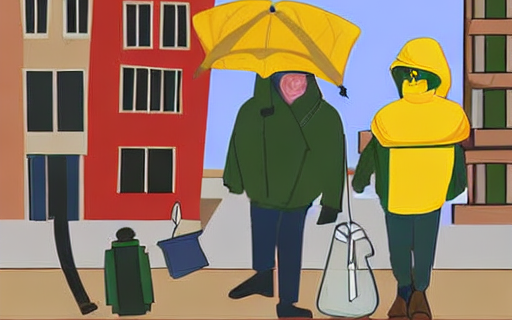
Walking in Their Shoes: Understanding Homelessness through Vagabond’s City Tours
Introduction
Definition of homelessness
Definition of homelessness: Homelessness refers to the state of not having a stable, safe, and adequate place to live. It is a complex issue that affects individuals and families from various backgrounds. Homelessness can be temporary or chronic, and it can result from a range of factors, including poverty, unemployment, mental illness, substance abuse, and lack of affordable housing. People experiencing homelessness often face numerous challenges, including limited access to healthcare, education, employment opportunities, and social support networks. Understanding the definition of homelessness is crucial in order to address the root causes and develop effective solutions to support those in need.
Importance of understanding homelessness
Understanding homelessness is crucial in order to address the issue effectively. By gaining a deeper understanding of the challenges faced by those experiencing homelessness, we can develop more compassionate and informed approaches to support them. It allows us to break down stereotypes and misconceptions, fostering empathy and creating a sense of community. Moreover, understanding homelessness helps us identify the root causes and systemic factors that contribute to this social problem, enabling us to advocate for meaningful change and work towards long-term solutions. By walking in their shoes through Vagabond’s City Tours, we can gain firsthand insights into the realities of homelessness and become better equipped to make a positive impact in the lives of those affected.
Overview of Vagabond’s City Tours
Vagabond’s City Tours offer a unique and immersive experience that allows participants to gain a deeper understanding of homelessness. These tours provide an opportunity to walk in the shoes of those experiencing homelessness, offering a glimpse into their daily struggles and challenges. By exploring the city through the lens of homelessness, participants can develop empathy and compassion, and gain a greater appreciation for the complexities of this issue. Through engaging narratives and personal stories, Vagabond’s City Tours aim to educate and inspire individuals to take action and make a difference in the lives of those affected by homelessness.
The Experience of Homelessness
Challenges faced by homeless individuals
Homelessness is a complex issue that presents numerous challenges for individuals experiencing it. From the lack of affordable housing to limited access to healthcare and social services, homeless individuals face a multitude of obstacles on a daily basis. One of the main challenges is the stigma and discrimination they encounter, which can further isolate and marginalize them. Additionally, finding employment and stable income can be extremely difficult for homeless individuals, as they often lack a permanent address and face barriers in accessing job opportunities. Furthermore, the lack of a safe and secure living environment puts homeless individuals at risk of physical and mental health issues. Despite these challenges, organizations like Vagabond’s City Tours play a crucial role in raising awareness and understanding about homelessness, highlighting the need for systemic change and support for those experiencing homelessness.
Factors contributing to homelessness
Factors contributing to homelessness can vary greatly, but they often stem from a combination of economic, social, and personal factors. Economic factors such as poverty, unemployment, and lack of affordable housing can make it difficult for individuals and families to maintain stable housing. Social factors, including lack of support networks, family breakdown, and discrimination, can also contribute to homelessness. Additionally, personal factors such as mental health issues, substance abuse, and domestic violence can further exacerbate the risk of becoming homeless. It is important to understand and address these contributing factors in order to effectively combat homelessness and provide appropriate support to those in need.
Impact of homelessness on mental health
Homelessness has a profound impact on the mental health of individuals experiencing it. The constant uncertainty, lack of stability, and isolation that come with living on the streets can lead to increased levels of stress, anxiety, and depression. The daily struggle to find shelter, food, and basic necessities takes a toll on one’s psychological well-being, often resulting in feelings of hopelessness and despair. Moreover, the stigma and discrimination faced by homeless individuals further exacerbate their mental health challenges. Without access to proper healthcare and support systems, many homeless individuals are unable to receive the necessary treatment for their mental health conditions, perpetuating a vicious cycle of homelessness and poor mental well-being. It is crucial to recognize and address the impact of homelessness on mental health in order to provide effective interventions and support for those in need.
Vagabond’s City Tours: A Unique Approach
Background of Vagabond’s City Tours
Vagabond’s City Tours is a unique initiative that offers a fresh perspective on homelessness. Unlike traditional tours, Vagabond’s City Tours are led by individuals who have experienced homelessness themselves. These tour guides, or ‘vagabonds’, provide an authentic and personal account of life on the streets, giving participants a deeper understanding of the challenges faced by those without a home. By walking in their shoes, participants gain empathy and a new perspective on homelessness, breaking down stereotypes and fostering compassion within the community.
Mission and goals of the organization
The mission of Vagabond’s City Tours is to provide a unique and immersive experience that allows individuals to gain a deeper understanding of homelessness. Through our guided tours, we aim to challenge stereotypes and foster empathy by sharing the stories and perspectives of those who have experienced homelessness. Our goal is to raise awareness about the complexities of homelessness and inspire action towards creating positive change in our communities. By walking in their shoes, we hope to create a more compassionate and inclusive society.
How the tours are conducted
The tours conducted by Vagabond provide a unique opportunity to gain a deeper understanding of homelessness. Led by experienced guides who have experienced homelessness themselves, these tours offer a firsthand perspective on the challenges faced by individuals living on the streets. Participants are taken to various locations within the city, where they can witness firsthand the realities of homelessness and hear personal stories from the guides. Through this immersive experience, participants are able to develop empathy and a greater appreciation for the complex issues surrounding homelessness.
Walking in Their Shoes: Tour Highlights
Visiting homeless shelters and support centers
Visiting homeless shelters and support centers provides a unique opportunity to gain a deeper understanding of the challenges faced by individuals experiencing homelessness. These visits allow us to witness firsthand the conditions in which they live and the services available to support them. By immersing ourselves in their environment, we can begin to comprehend the daily struggles they endure and the resilience they demonstrate. Additionally, interacting with staff and volunteers at these facilities gives us valuable insights into the programs and initiatives aimed at addressing homelessness. Through these visits, we can develop a greater empathy and appreciation for the complexities of homelessness, ultimately driving us to take action and advocate for positive change.
Interacting with homeless individuals
Interacting with homeless individuals is a crucial aspect of understanding homelessness. Through personal interactions, we can gain insights into their experiences, challenges, and aspirations. Engaging in conversations and listening to their stories not only humanizes their struggles but also helps break down stereotypes and misconceptions. It allows us to develop empathy and compassion, fostering a deeper understanding of the complex issues surrounding homelessness. By walking in their shoes, we can begin to comprehend the daily realities they face and work towards finding sustainable solutions to address this pressing social problem.
Learning about their stories and experiences
In the section titled ‘Learning about their stories and experiences’, the article delves into the personal narratives of individuals experiencing homelessness and how Vagabond’s City Tours provides a unique opportunity to hear their stories firsthand. Through guided tours led by individuals who have experienced homelessness themselves, participants gain a deeper understanding of the challenges and triumphs faced by those living on the streets. By listening to these stories, visitors can develop empathy and compassion, breaking down stereotypes and fostering a greater sense of community and support for those in need.
Benefits of Participating in Vagabond’s City Tours
Increased empathy and understanding
Increased empathy and understanding are key outcomes of participating in Vagabond’s City Tours, a unique initiative aimed at shedding light on the experience of homelessness. By immersing participants in the daily challenges faced by those without a home, these tours provide a firsthand perspective that goes beyond mere statistics and stereotypes. Through engaging narratives and personal interactions with individuals who have experienced homelessness, participants gain a deeper understanding of the complex factors that contribute to homelessness and the resilience of those living on the streets. This increased empathy not only fosters compassion and support for individuals experiencing homelessness but also motivates individuals to take action towards addressing the systemic issues that perpetuate homelessness in our society.
Awareness of community resources
Awareness of community resources is crucial when it comes to understanding and addressing homelessness. Vagabond’s City Tours provides a unique opportunity to not only learn about the experiences of individuals experiencing homelessness but also to gain insight into the various resources available in the community. By walking in their shoes and witnessing firsthand the challenges they face, participants can develop a deeper understanding of the systemic issues that contribute to homelessness. Moreover, the tours highlight the importance of community support and the role that organizations and services play in helping individuals transition out of homelessness. Through this immersive experience, participants are encouraged to become advocates for change and to actively engage in efforts to improve the lives of those affected by homelessness.
Inspiration for social change
The Vagabond’s City Tours provide a unique and immersive experience that allows participants to walk in the shoes of the homeless. By exploring the city from their perspective, individuals gain a deeper understanding of the challenges and realities faced by those experiencing homelessness. This firsthand encounter serves as a powerful inspiration for social change, motivating participants to take action and make a difference in their communities. Through these tours, people are encouraged to challenge stereotypes, advocate for policy changes, and support organizations working towards ending homelessness. The Vagabond’s City Tours not only educate but also ignite a passion for social justice, fostering empathy and compassion towards the homeless population.
Conclusion
Summary of the article
The article titled ‘Walking in Their Shoes: Understanding Homelessness through Vagabond’s City Tours’ provides a comprehensive exploration of the issue of homelessness and how it can be better understood through the unique perspective offered by Vagabond’s City Tours. The author delves into the experiences of individuals facing homelessness, highlighting the challenges they encounter and the impact it has on their lives. Through immersive walking tours, Vagabond’s City Tours aims to bridge the gap between the housed and the unhoused, fostering empathy and understanding among participants. The article emphasizes the importance of engaging with the issue of homelessness through experiential learning and encourages readers to take part in such initiatives to gain a deeper understanding of the complexities surrounding homelessness.
Call to action for readers
In conclusion, after learning about the realities of homelessness through Vagabond’s City Tours, it is essential for readers to take action. The first step is to educate ourselves further about the issue by reading books, articles, and documentaries on homelessness. By understanding the root causes and complexities of homelessness, we can challenge stereotypes and advocate for policy changes that address the underlying issues. Additionally, supporting local organizations and initiatives that provide assistance to homeless individuals can make a significant impact. Whether it’s volunteering at a shelter, donating to a homeless outreach program, or advocating for affordable housing, every effort counts. Together, we can create a more compassionate and inclusive society where everyone has a place to call home.
Importance of supporting initiatives like Vagabond’s City Tours
Supporting initiatives like Vagabond’s City Tours is crucial in addressing the issue of homelessness. These tours provide a unique opportunity for individuals to gain a deeper understanding of the challenges faced by homeless individuals and the circumstances that lead to their situation. By participating in these tours, individuals can develop empathy and compassion, which can lead to a greater willingness to take action and support initiatives that aim to alleviate homelessness. Furthermore, supporting Vagabond’s City Tours helps create awareness and generate funds that can be used to provide essential resources and support services for homeless individuals. It is through initiatives like these that we can contribute to creating a more inclusive and compassionate society for all.
Next Steps To further explore the issue of homelessness and gain a deeper understanding of the challenges faced by those experiencing it, we encourage you to take action and participate in Vagabond’s City Tours. By joining these immersive tours, you will have the opportunity to walk in the shoes of individuals who have experienced homelessness firsthand. Through engaging narratives and personal stories, these tours aim to foster empathy, raise awareness, and inspire positive change. To learn more about Vagabond’s City Tours and how you can get involved, visit their website at https://vagabond.nl. Together, let’s take the next step towards creating a more compassionate and inclusive society for all.



